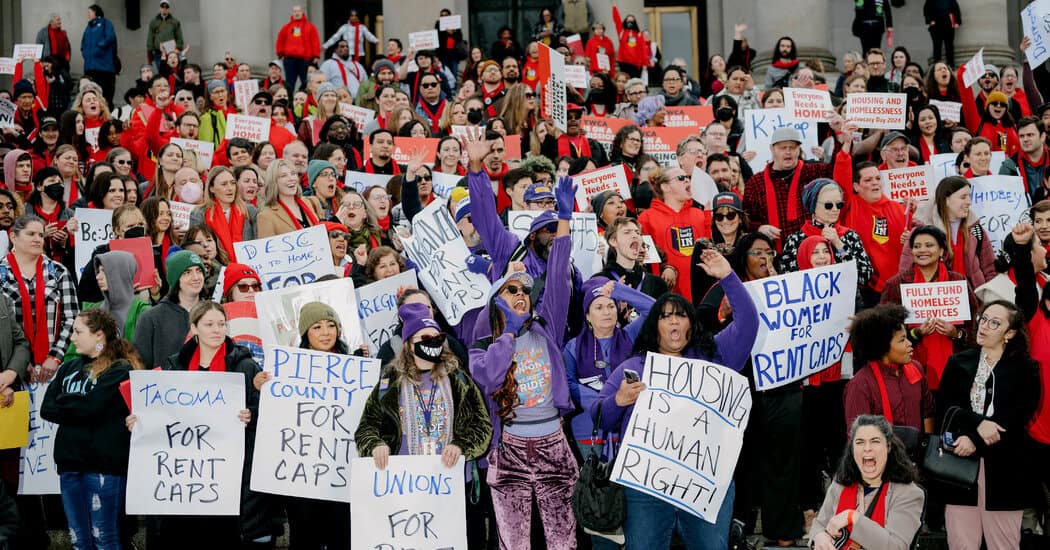
A New ‘Holy Grail’ in the Housing Crisis: Statewide Rent Caps
For the last 10 years, Dominique Horn has worked for a community health organization in the fast-growing city of Vancouver in Washington State, helping people squeezed by soaring rents to try to avoid homelessness.
Sometimes she wonders if she’s going to be her agency’s next client.
With her husband struggling at times to find work, Ms. Horn has maxed out her credit cards to keep pace with the rent. She has relied on public assistance and stayed in shelters. The couple and their two children have moved so many times that she keeps sentimental items like photos and heirlooms boxed up, because no place feels like home yet.
“I’m just in a constant state of waiting for the other shoe to drop,” said Ms. Horn, 42, whose current lease expires in May. “I am one price hike away from being back into instability.”
Ms. Horn is one of thousands of Washington residents who have converged in recent weeks on Olympia, the state capital, to lobby legislators about one of the most closely watched housing bills in the country: A measure that would cap residential rent increases at 7 percent a year.
Deemed a priority by the Democratic leaders who control the State Legislature, the bill has cleared the House of Representatives and is now in the Senate. If it is enacted, Washington would become the third state in the country to adopt statewide rent regulations, after Oregon and California — and all within the last five years.
From coast to coast, housing has emerged as perhaps the biggest statehouse issue this year. The number of households considered by the federal government to be rent-burdened — meaning that rent consumes more than 30 percent of their income — climbedto a record high of 22.4 million in 2022, according to a new report from the Joint Center for Housing Studies at Harvard University.
